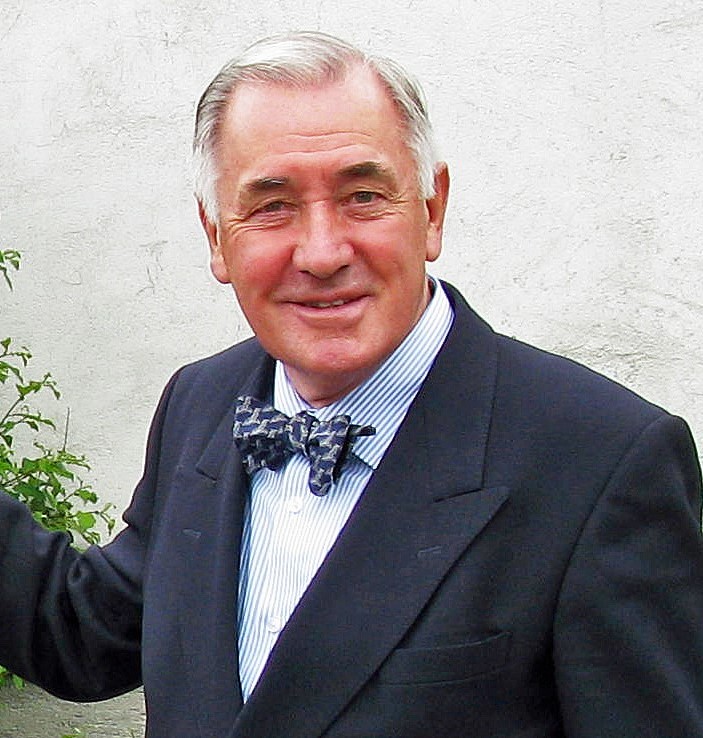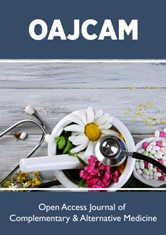
Lupine Publishers Group
Lupine Publishers
Menu
ISSN: 2644-1217
Review ArticleOpen Access
“Phytochemical Screening, Anti-Oxidant and Anti- Hyperglycaemic Activity Determination of PHYLLANTHUS EMBLICA” Volume 3 - Issue 4
Leashini A/P Subramaniam, Nabila Perveen, and Naeem Hasan Khan*
Department of Pharmacy, AIMST University, Malaysia
Received: October 09, 2021 Published: November 05, 2021
*Corresponding author: Naeem Hasan Khan, Department of Pharmacy, AIMST University, 08100 Bedong, Kedah DA, Malaysia
DOI: 10.32474/OAJCAM.2021.03.000169
Abstract
Present research was intended to study the phytochemical, antioxidant and antihyperglycemic activity of Phyllanthus emblica fruits ethanolic extract (PEFEE). This involved the preparation of PEFEE using cold maceration and soxhlet extraction, followed by its phytochemical analysis and antihyperglycemic and antioxidant activity. Maceration and soxhlet extraction of Phyllanthus emblica using ethanol offered dark brown of Phyllanthus emblica fruits ethanolic extract. The antihyperglycemic activity involved STZ induced diabetic rats where they were treated with PEFEE at 200 mg and 400 mg/kg body weight/day, or glibenclamide (10 mg/kg body weight/day) for 21 days. Phytochemical screening of the extract revealed the presence ophytoconstituents, such as: carbohydrates, proteins, amino acids, steroids, flavonoids, tannins and phenolic compounds, alkaloids, cardiac glycosides, coumarins, anthraquinone, flavonoids and volatile oils The antioxidant activity and total phenolic content wascarried out to identify the IC50 value and the total amount of phenolic content of Phyllanthus emblica. The DPPH radical scavenging assay and total phenolic test were shown positive for the antioxidant activity of the Phyllanthus emblica. As a basis, Folin-Ciocalteu reagent was used to measure the phenolic content of different concentrations of plant extract. In this test, the Gallic acid was used as a standard and the total phenolic content was calculated by using the standard formula In the present study, the total phenolic content found was to be 6.420 mg GAE/g and 6.097 mg GAE/g for the concentrations of 50 and 200μg/ml respectively. According to the results obtained, the IC50 was calculated for the BHT as well as Phyllanthus emblica extract, the value was 84.04μg/ml and 182.82μg/ml, respectively. However, it can be concluded that the Phyllanthus emblica are exhibiting antioxidant effect as it shows positive results for the total phenolic content (TPC) as well as DPPH scavenging method. The antihyperglycemic activity revealed that Phyllanthus emblica fruits extract has antihyperglycemic effect against STZ induced diabetic rats and the extract maintains the BW of diabetic rats. Present study established that the Phyllanthus emblica fruits ethanolic extract possess antihyperglycemic activity.
Keywords: Phytochemicals; antioxidant; Phyllanthus emblica; antihyperglycemic; Soxhlet
Artificial Intelligence: An Overview-
Since the beginning of human birth, man has familiarized with plants and used them as medicines, food stuffs, clothing, shelters, fertilizers, fragrances and modes of transportation throughout the ages. While searching for food and facing the human sufferings, ancient man has begun to distinguish those plants having medicinal value from others with specific pharmacological action. This interaction between plants and man has developed and many plants are being utilized for medicinal purpose Kumar et al. [1]. The starting of the development of herbal drugs is based upon the advancement of chemistry as isolation, purification and determination of plant compounds Shakya et al. [2]. Recently, in industrialized and developing countries, the assessment of safety, quality and efficiency of medicinal plants and herbal drugs has become a key concern. In recent research, it was indicated that phenolic compounds are highly present and structurally diverse phytochemical in plants as shown in classification of dietary phytochemicals Liu,[3] Figure 1. Phyllanthus emblica L. is a traditional, medicinal fruit tree which is broadly distributed in most tropical and subtropical countries particularly in central and southern India, Bangladesh, Pakistan, Sri Lanka, the Mascarene Islands, southern China and Malaysia Rai et al. [4]; Thilaga et al. [5]. This species is a medium sized fruity tree having a height of 8-18 meter with thin light grey bark exfoliating in small thin irregular flakes Meena et al. [6]. The parts of Phyllanthus emblica mostly used are flowers, dried fruits, fresh fruits, leaves and root bark Kumar et al. [7]. The flowering and fruiting session of this species are February-May and December-January Rai et al. [4]. The plant description of Phyllanthus emblica is presented in Table 1. The taxonomical classification of Phyllanthus emblica is showed in Table 2. Phyllanthus emblica L. also having some international and local common names are placed in Table 3. Figure 2 represents the plant tree and different parts of the tree. Thousand years ago, the fruits of Phyllanthus emblica with sour, sweet, bitter, cooling, rejuvenative, astringent and antipyretic characteristics were useful as traditional medicine. Moreover, Phyllanthus Emblica fruit is one of the essential and broadly used herbs in traditional medicinal system such as Ayurvedic medicine, Chinese herbal medicine and Tibetan medicine Gaire et al. [8]. Previously, most of the studies exhibited that Phyllanthus emblica had good health effects as antioxidant, anti-diabetic, anti-microbial, anti-inflammatory and hepatoprotective agent (Yang et al. [9]; Yadav et al.,[10]. The major phytochemical constituents present in Phyllanthus Emblica fruits, and their pharmacological activity is summarized in Table 4. The constituents of multiple components in Phyllanthus emblica varies based on the cultivation systems of the plant, the drying process and the harvesting period Thiangthum et al. [11]. Hence, the quality control is very crucial.
Antioxidant properties
An antioxidant is a bioactive compound that scavenges the free radicals from body cells and prevents or reduces the damage caused by reactive oxygen species (ROS). ROS is produced during mitochondrial oxidative metabolism as well as in cellular response to xenobiotics, cytokines and bacterial invasion. DPPH is known as a stable free radical by the delocalisation of the spare electron over the molecule as a whole, so that the molecules do not dimerise, like most other free radicals. Besides that, the delocalisation had resulted in deep violet colour, with absorption in ethanol solution at around 520nm. Upon the mixture of DPPH solution with the sample extract that can donate a hydrogen atom, the permanent deep violet colour will be decolourised and become yellow colour.
Antihyperglycemic properties
Diabetes is one of the most common metabolic disorders affecting the people of both developed and developing countries. The prevalence of this diabetes is estimated to be 25% of the world over population and diabetes is considered as a crucial public health challenge Arumugam et al. [12]. While the main route for diabetes control is synthetic oral hypoglycemic drugs besides insulin, they fail to completely reverse the course of its complications and further exacerbate it by showing prominent side effects as well. Natural product, especially plant source, are the main target for identifying potential lead candidates and perform critical role in the future drug development programmes. In addition, numerous plants are rich source of bioactive secondary metabolites that are secure from adverse side effects and contribute strong pharmacological actions Salehi et al. [13]. Currently, medicinal plants are prescribed to treat diabetes since these plants contain numerous phytoconstituents such as alkaloids, carotenoids, flavonoids, glycosides, saponins and terpenoids that may have antidiabetic activities Kooti et al. [14]. The combined activity of biologically active compounds present in medicinal plants contributes to the possible beneficial properties of each plant matrix, and this may indicate the first step toward recognising their biological activities and beneficial actions (Salehi et al. [15]. The antihyperglycemic effects resulting from the treatment with plants are commonly due to their potential to boost the efficiency of pancreatic tissue by rising insulin secretions or decreasing intestinal glucose absorption Kooti et al. [14].
Materials and Methods
Collection and preparation of plant material
The fresh fruits of Phyllanthus emblica were purchased from Mutaiyas supermarket located at Sungai Petani, Kedah D.A., Malaysia. The fresh fruits were well washed with clean and distilled water to remove impurities and dirt. Then, the seeds were separated from the fruits using sharp knife and the fruit pulps were cut into small pieces and dried without being exposed to sunlight as mentioned in Figure 3 and small sized cut pieces of Phyllanthus emblica fruits are shown in Figure 4, respectively.
Cold Maceration
Phyllanthus emblica fruits pieces with 95% ethanol
Phyllanthus emblica fruits cut pieces of 500g were added into 650ml of 95% of ethanol. This flask was placed in the cupboard at room temperature. Occasional shaking and stirring for one week at room temperature, the ethanol fruit extract content was collected and filtered through muslin cloth. Extract was concentrated using a rotary evaporator at 45 ͦ C under reduced pressure. The evaporated material was collected in evaporating dish. The evaporating dish was placed on water bath to further concentrate the extract.
Soxhlet Extraction
Phyllanthus emblica fruits pieces with 95% ethanol
Phyllanthus emblica fruits dried cut pieces 500g were carefully crushed using in an electric grinder. Then, the crushed fruit pieces were extracted with 500ml of 95% of ethanol. The crushed pieces of Phyllanthus emblica were packed into the Soxhlet thimble, lined with a cotton pad until the Soxhlet siphon tube. Extraction was initiated by heating at (~70 - 75) using heating mantle. This process was continued until the solvent in the Soxhlet siphon tube turned colourless. The solvent containing the fruit extract was cooled and concentrated using rotary evaporato (Rota evaporator, BUCCHI Corporation) as stated above. Next, the filtrates were collected in evaporating dish. The evaporating dish was placed on water bath to solidify the extract. Phyllanthus emblica ethanolic extracts are shown in evaporating dishes in Figure 5.
Results
The percentage yield of the ethanol extract of Phyllanthus emblica fruits was 8.1% of maceration and that of Soxhlet was 12% respectively. The extractive value of the plant extract will be useful for the evaluation of crude drug. It is also important to know about the nature of the chemical constituents and to estimate the constituents extracted with the solvent such as ethanol.
Phytochemical screening of phyllanthus emblica
Phytochemical screening of ethanol extract of Phyllanthus emblica fruits was done according to the standard procedures. The dried extract was used in qualitative and quantitative tests to determine phytochemical constituents. The summary of phytochemical screening of phyllanthus emblicais is shown in Table 5. The phytochemicals were separated from the fruit pieces using ethanol which showed the presence of various bioactive compounds in the Phyllanthus emblica fruits. The results of phytochemical screening of Phyllanthus emblica fruits ethanolic extract showed the presence of phyto-constituents such as: carbohydrate, protein, amino acid, steroid, flavonoids, tannins and phenolic compound, alkaloid, cardiac glycosides, anthraquinone glycosides, coumarins and volatile oils. The result of these phytochemical findings was also supported by other research which using Phyllanthus emblica fruits extract Laulloo et al. [16].
Table 5: Phytochemical screening of phyllanthus emblicais (+) represent presence : (-) represent absence

Antioxidant activity
Determination of Total Phenolic Content
The antioxidant potential of the phyllanthus emblicais extract was determined by using DPPH free radicals scavenging method and BHT was used as a standard. The DPPH is a stable free-radicals which have a colour of purple, as the antioxidants react with the DPPH, the DPPH will be converted into non-radical DPPH-H form. Besides that, the colour of the DPPH will be decolourised from purple to light yellow colour. The degree of decolourisation indicates the potency of the plant extracts in scavenging the free radicals.
Subsequently, the plant extract was prepared in the
concentration of 10, 20, 40, 60, 80 and 100 μg/ml and mixed with
the DPPH, the absorbance was determined at 518nm after kept the
tubes in the dark for 30 minutes.
Phenolic compounds are very essential plant constituents which
responsible for the antioxidant activity due to its redox properties.
As a basis, Folin-Ciocalteu reagent was [18] used to measure the
phenolic content of different concentrations of plant extract. In this
test, the Gallic acid was used as a standard and the total phenolic
content was calculated by using the formula C = (A/B) x dilution
factor. The results were derived from the calibration curve of Gallic
acid, it was expressed as Gallic acid equivalents (GAE) per gram of
samples. In the present study, the total phenolic content found was
6.420 mg GAE/g and 6.097 mg GAE/g for the concentrations of 50
and 200μg/ml respectively. The following formula was used for the
antioxidant activity determination.
DPPH Radical Scavenging Activity (%) = 𝐴𝑐𝑜𝑛𝑡𝑟𝑜𝑙−𝐴𝑠𝑎𝑚𝑝𝑙𝑒 𝑥
100
𝐴𝑐𝑜𝑛𝑡𝑟𝑜𝑙
Preparation of Standard
Gallic acid was used as a standard in this assay and compared with the sample to identify the presence of phenolic compounds in the plant extract. Six different concentrations of Gallic acid were prepared at 1, 2, 4, 6, 8 and 10μg/ml. The stock solution was prepared by dissolving 10mg of Gallic acid in 10ml of 95 % ethanol. Then, 1ml of the solution was [19] diluted with 9ml of ethanol to obtain a concentration of 100μg/ml. The same procedure was repeated until the final concentration of 1μg/ml was obtained. From the stock solution, 1.0, 0.8, 0.6, 0.4, 0.2, 0.1ml were pipetted into 6 different tubes and labelled accordingly. The volume was made up to 10ml with 95% ethanol. Another 6 clean tubes were prepared. 0.2ml of the standard solution were taken and transferred into the test tube prepared. 4 ml of 2.5% sodium carbonate and 0.2ml of Folin- Ciocalteu reagent was added to each of the test tubes. The test tubes were allowed to stand for 2 hours. The absorbance of the standard solution was examined by 750nm UV spectrophotometry and was recorded.
Preparation of Sample
The extracts were obtained from the Soxhlet extraction method using 95% ethanol. 4 different concentrations of the extracts were prepared at 25, 50, 100, 200μg/ml. 2 mg of extracts was dissolved in 10ml of ethanol, forming a stock solution with [20] a concentration of 200μg/ml. Then it was double diluted by mixing 2ml of the stock solution and 2ml of ethanol to obtain the concentration of 100μg/ ml. The same procedure was repeated and obtained 50μg/ml in concentration. Next, 1ml of stock solution was taken and mixed with 2ml of ethanol to obtain a concentration of 25μg/ml. 4 test tubes were prepared and 0.2ml of the sample solution were taken and transferred into the [21] test tube prepared. 4ml of 2.5% sodium carbonate and 0.2ml of Folin-Ciocalteu reagent was added to each of the test tubes. The test tubes were allowed to stand for 2 hours. The absorbance of the standard solution was examined by 750nm UV spectrophotometry and was recorded.
Preparation of Blank
0.2ml of Folin-Ciocalteu reagent, 4ml of 2.5% sodium carbonate and 0.2ml of ethanol were added into the test tube and it was allowed to stand for 2 hours. [22] The absorbance of the standard solution was examined by 750nm UV spectrophotometry. The values of absorbance of standard and sample obtained were then utilised in plotting the graph of UV absorbance against the concentration of sample and standard.
DPPH Radical Scavenging Assay (diphenyl-picrylhydrazyl hydrate)
Preparation of DPPH solution
0.1mM of methanolic DPPH was freshly prepared by dissolving 3.94mg of DPPH crystalline powder in 100ml of methanol and kept in a clean beaker. The beaker was covered with aluminium foil to prevent oxidation.
Preparation of standard
BHT was used as a standard in this assay. 6 different concentrations of BHT solutions were prepared at 10, 20, 40, 60, 80 and 100μg/ml. The stock solution was first prepared by dissolving 10mg of BHT in 10ml of methanol. 1ml of the solution was then diluted ten-fold with 9ml of methanol to obtain a concentration of 100μg/ml. From the stock solution, 10, 8, 6, 4, 2, 1ml were [23,24] pipetted into 6 different test tubes and made up to 10ml with methanol. Then, 3ml of 0.1mM DPPH reagent was added to 2.5ml of different concentrations of methanolic extracts. The mixtures were shaken and labelled accordingly. The test tubes were allowed to keep in the dark for 30 minutes. The absorbance was measured at 518nm using a UV spectrophotometer.
Preparation of Sample
The steps in preparation of DPPH solution were repeated in the preparation of the sample, in which the BHT was changed to the plant extract. The absorbance was measured at 518nm using a UV spectrophotometer.
Preparation of Blank
The blank solution was prepared by mixing 3ml of 0.1mM
DPPH reagent and 2.5ml of methanol, the solution was allowed to
stand in the dark for 30 minutes. The absorbance was measured
at 518nm using a UV spectrophotometer. The values of absorbance
of standard and sample obtained were then utilised in plotting the
graph of UV absorbance against concentration of [25] the sample
and standard. The concentration and absorbance of Gallic acid
determined by U.V and concentration of ethanolic phyllanthus
emblicais extract absorbance is shown in Tables 6 & 7 respectively.
Percentage scavenging against standard and sample concentrations
are shown in Graph 1 and Graph 2, respectively. The concentration,
absorbance and the corresponding percentage of scavenging of
BHT for DPPH Free Radical Scavenging Assay is shown in Table 8.
DPPH Free Radical Scavenging Assay
Table 8: The concentration, absorbance and the corresponding percentage of scavenging of BHT (butylated hydroxytoluene).

Antihyperglycemic activity
Animal
Healthy, adult, Sprague-Dawley (SD) rats (180 ± 20 g) were used for anti-hyperglycemic studies. The animals were obtained from Central animal house, AIMST University, Malaysia. Approval from the AIMST University Human and Animals Ethics Committee was obtained.
Induction of Diabetes
Healthy, adult male SD rats was used for the experiment. Diabetes mellitus will be induced in overnight- fasted rats by administration of single intraperitoneal (I.P.) injection of freshly prepared streptozotocin (STZ) with a dose of 60 mg/kg/mL Patterson et al, [26]. To prevent the STZ-induced hypoglycaemia, rats received 10% dextrose solution after 6 h of STZ administration for next 24 h. Induction of diabetes was verified after 72 h by measuring blood glucose level with strips using glucometer and the animals allowed 14 days for the stabilization of blood glucose level Ramachandran et al, [27]. On day 14, animals having a blood glucose level higher than 250 mg/dL were considered diabetic and included in the experiments.
Experimental Design for Anti-hyperglycaemic Activity
Diabetic animals were randomly divided into five groups
(Group II–V) as follows:
Group I: Normal control
Group II: Diabetic control
Group III: Diabetic animals treated with glibenclamide (20
mg/kg/P.O.)
Group IV: Diabetic animals treated with phyllanthus emblicais
extract (100 mg/kg/P.O.)
Group V: Diabetic animals treated with phyllanthus emblicais
extract (200 mg/kg/P.O.)
Group I (normal control) and group II (diabetic control) rats
were [28,29] given 0.5% w/v carboxymethylcellulose (CMC) while
the rats in group III treated with 20mg/kg body weight (BW) of
glibenclamide and rats in group IV-V were administered with
phyllanthus emblicais extract of 100mg and 200mg per kg. The
doses of AE extract were selected from the acute toxicity study
finding that has been done by (Sabitha et al 2011). The standard
and test drugs were suspended in 0.5% w/v CMC and administered
once daily through oral gavage for 28 consecutive days. Throughout
the study, variations in experiment animals’ body weight will be
monitored at regular intervals. At the end of the study, the [30]
blood samples withdrawn from all the experimental rats through
retro-orbital plexus puncture. The serum was separated from the
blood sample and used for biochemical analysis. Later, the rats
were sacrificed, and their pancreas, liver and kidney excised and
kept in 10% formalin for histopathology studies.
Statistical Analysis
All the data was expressed as mean ± standard error of the mean (SEM) and evaluated by one-way analysis of variance (ANOVA), followed by Tukey’s post-hoc test. P < 0.05 will be considered as [31,32] statistically significant. Anti-hyperglycaemic activity of ethanolic maceration fruit extract was screened in vivo in alloxan monohydrate induced diabetic rats. Alloxan acts as a beta cytotoxin is generally used to induce experimental diabetes through destroying the insulin secreting pancreatic β-cell by the production of ROS, resulting in a depletion of endogenous insulin release (Chackrewarthy, 2012). The diabetic rats were given fruit extract at two different doses, 200 mg/kg/P.O. and 400 mg/kg/P.O. once daily for 21 consecutive days and the blood glucose level was monitored on 7th, 14th and 21st days of the experiment. The effectiveness of antihyperglycaemic activity of phyllanthus emblicais extract was compared with the standard drug, glibenclamide. Glibenclamide is a sulphonyl urea oral hypoglycemic agent that exerts its antidiabetic action by early extra-pancreatic and late insulin stimulation.
Table 9: Effects of ethanolic extract of Phyllanthus emblica fruits on body weight (g) of Sprague-Dawley rats, Values are expressed as mean ± standard error of the mean (n= 6).

Table 10: Effects of ethanolic extract of Phyllanthus emblica fruits on blood glucose (mmol/L) of Sprague-Dawley rats.

The outcome of the study demonstrated [33] the mean blood
glucose level of diabetic positive control groups treated with
glibenclamide, 200 mg/kg and 400 mg/kg fruit extract achieved
normal from week 1 onwards. These treatment groups showed a
significant reduction in the glucose level compared to the diabetic
control group. After the induction of diabetes, the mean blood
glucose level of diabetic group kept rising till week 2 and slightly
decreased on week 3, the diabetic condition was persisted [34]
throughout the study. Nevertheless, the normal control group
remained the blood glucose level in the normal range over the
treatment period. As shown in Tables 9 & 10, respectively, the
normalized blood glucose levels of 200 and 400 mg/kg phyllanthus
emblicais treated groups did not exhibit significant difference
as compared to the 20 mg/kg glibenclamide treated group since
week one. This revealed that the anti- hyperglycaemic effect of the
phyllanthus emblicais was comparable with that of glibenclamide.
Although there was not much difference between the mean blood
glucose level identified from 200 mg/kg fruit extract and 400 mg/
kg fruit extract throughout the research, still the 400 mg/kg extract
showed more reduction [35,36] in the glucose level than the 200
mg/kg treatment. Hence, this suggested that phyllanthus emblicais
decreased the blood glucose level in a dose-dependent manner.
The anti-hyperglycaemic effect of phyllanthus emblicais might
be attributable [37] to the presence of antioxidant, phenolics
compound which sequester the ROS formed by the alloxan, prevent
the further destruction of the pancreatic β-cells. Additionally, the
utilized of low dose alloxan monohydrate (120 mg/kg) to induce
the chemical diabetes causes partial damage of the pancreatic
β-cells which give rise to the diabetic rats with surviving beta
cell that having the opportunity for regeneration Banda et al.
[38]. It was reported that the flavonoid able to regenerate the
damaged pancreatic β-cells Petchi et al., [39]. Therefore, from the
phytochemical screening that confirmed the presence of phenolic
and flavonoids in the phyllanthus emblicais showed that it is
possible to enhance the regeneration and prevent the damage of
pancreatic β-cells, resulting in the anti-hyperglycaemic activity. In
the body weight analysis, [40,41] the body weight changes among
the groups were not remarkable. The increment of body weight
was observed in the diabetic positive control groups treated with
glibenclamide, 200 mg/kg and 400 mg/kg fruit extract whilst the
body weight kept decreasing in the diabetic group due to the reason
of increased muscle wasting as a consequence of increased protein
catabolism. The observed body weight increment in the fruit
extract treated groups might because of the antioxidant present,
the phenolic groups that protected diabetic rats against stress,
additionally helpful for recovery in body weight Ranjan et al. [42].
Conversely, the gradual increase of body weight in glibenclamide
treated groups may be due to the growth of the skeletal size and
epididymal fat Parasuraman et al. [. Hence, it is indicated that
phyllanthus emblicais may assists in the recovery of body weight
with diabetes.
Effect of PEFEE on body weight
In this antihyperglycemic study, Streptozotocin (STZ) was administered in animals in order to induce diabetes mellitus. After receiving STZ, 80% of the mice developed diabetes, and 10% of the animals died from STZ-induced hypoglycemia. Moreover, the normal [43] control rats showed steady BW gain throughout the 21 days of treatment, while the diabetic control rats showed significant BW reduction. However, the treatment with the Phyllanthus emblica fruits ethanolic extract (200 and 400 mg/kg) and glibenclamide for twenty-one days led to a significant increase in BW of diabetic animals. Throughout the study, diabetic control animals showed significant increases in blood glucose levels compare with control animals. However, glibenclamide and PEFEE at doses of 200 and 400 mg/kg body weight demonstrated significant reduction in STZ induced hyperglycemia from 2nd week onwards.
Discussion
Streptozotocin (STZ) is an antibiotic produced by Streptomyces achromogenes, a Gram-positive [44] bacterium and it is used as a chemotherapy agent in the treatment of pancreatic β cell carcinoma as well as to induce diabetes in experimental animals. In addition to that, STZ damages the insulin producing beta cells of the pancreas in mammals. The capability of STZ in alkylating and inhibiting the DNA synthesis in mammalian cells, causes the destruction of β cells in the diabetic control group, the decrease in the BW was observed. It may be due to the significant muscle [45] degeneration, increased muscle wasting, and tissue protein loss. However, the ability of the plant fraction to reduce and regulate hyperglycemia [46] leads to the increase of BW of diabetic rats treated with plant extract. The administration of PEFEE reduced the blood glucose level in normal rats and normalized [47] the high blood glucose levels in diabetic rats at the end of 2nd week of the experiment onward, and the results were comparable with that of glibenclamide. This clearly indicates that Phyllanthus emblica has antihyperglycemic activity against STZ induced diabetes in rats and it has potential on maintaining the BW of diabetic rats. The antihyperglycemic property of plant may be due to the presence of flavonoids in the plant. Moreover, flavonoids and polyphenolic compounds in plants may play major role as antidiabetic agent by regenerating damaged beta cells in the pancreas and blocking glucose transport in the intestine by inhibiting the sodium-glucose cotransporter 1 (S-GLUT1), respectively Singh et al. [48].
Conclusion
Phyllanthus emblica fruits was chosen for this study as there were only a few research done before. The P. emblica fruits ethanol extract was successfully extracted through cold maceration and soxhlet extraction method with the extractive value of 8.1%. The phytochemical screening studies on ethanol fruits extract of Phyllanthus emblica showed positive results for carbohydrates, protein, amino acid, steroid, flavonoids, tannins and phenolic compound, alkaloid, cardiac glycosides, coumarins and volatile oils. This chemical composition was associated with important biological activities where this plant exhibited significant therapeutic importance. The Phyllanthus emblica fruits extract exhibited antihyperglycemic effect against STZ induced diabetic rats. In addition, this fruit extract has beneficial effect on maintaining the BW of diabetic rats. Many other research- based evidence showed that the essential oil extracted from the fruits of Phyllanthus emblica can be a promising source of natural valuable product, especially as a potential natural antihyperglycemic agent.
Interests of conflict
The authors declare that there is no conflict of interests in the present publication.
Acknowledgement
Faculty of Pharmacy, AIMST University is greatly appreciated for providing financial assistance and laboratory facilities at AIMST University, Bedong, Kedah D.A, Malaysia, in completion of this research project.
References
- Kumar N, Wani ZA, Dhyani S (2015). Ethnobotanical study of the plants used by the local people of Gulmarg and its allied areas, Jammu & Kashmir, India. International Journal of Current Research in Bioscience and Plant Biology, 2(9): 16-23
- Shakya AK, Sharma N, Saxena M, Shrivastava S, Shukla S, et al. (2012). Evaluation of the antioxidant and hepatoprotective effect of Majoon-e-Dabeed-ul-ward against carbon tetrachloride induced liver injury. Experimental and toxicologic pathology 64(7-8): 767-773.
- Liu RH (2004). Potential synergy of phytochemicals in cancer prevention: mechanism of action. The Journal of nutrition 134(12): 3479S-3485S.
- Rai N, Tiwari L, Sharma RK, Verma AK (2018). Pharmaco-botanical Profile on Emblica officinalis Gaertn. –A Pharmacopoeial Herbal Drug. Research & Reviews: Journal of Botany 1(2): 38-50.
- Thilaga S, Largia MJV, Parameswari A, Nair RR, Ganesh D, et al. (2013). High frequency somatic embryogenesis from leaf tissue of'Emblica officinalis' Gaertn.-A high valued tree for non- timber forest products. Australian Journal of Crop Science 7(10): 1480-1487.
- Meena AK, Singh A, Rao MM (2010). Evaluation of physicochemical and preliminary phytochemical studies on the fruit of Emblica officinalis Gaertn. Asian Journal of Pharmaceutical and Clinical Research 3(3): 242-43.
- Kumar KS, Bhowmik D, Dutta A, Yadav AP, Paswan S, et al. (2012). Recent trends in potential traditional Indian herbs Emblica officinalis and its medicinal importance. Journal of Pharmacognosy and Phytochemistry, 1(1): 18-28.
- Gaire BP, Subedi L (2014). Phytochemistry, pharmacology and medicinal properties of Phyllanthus emblica Linn. Chinese journal of integrative medicine pp.1-8.
- Luo W, Zhao M, Yang B, Ren J, Shen G, et al. (2011). Antioxidant and antiproliferative capacities of phenolics purified from Phyllanthus emblica L. fruit. Food Chemistry 126(1): 277- 282.
- Yadav SS, Singh MK, Singh PK, Kumar V (2017). Traditional knowledge to clinical trials: a review on therapeutic actions of Emblica officinalis. Biomedicine & Pharmacotherapy 93: 1292- 1302.
- Thiangthum S, Dejaegher B, Goodarzi M, Tistaert C, Gordien AY, et al. (2012). Potentially antioxidant compounds indicated from Mallotus and Phyllanthus species fingerprints. Journal of Chromatography B, 910: 114-121.
- Arumugam G, Manjula P, Paari N (2013). A review: Anti diabetic medicinal plants used for diabetes mellitus. Journal of Acute Disease 2(3): 196-200.
- Salehi B, Ata A, V Anil Kumar N, Sharopov F, Ramírez-Alarcón K, et al. (2019). Antidiabetic potential of medicinal plants and their active components. Biomolecule, 9(10): 551.
- Kooti W, Farokhipour M, Asadzadeh Z, Ashtary-Larky D, Asadi-Samani M, et al. (2016). The role of medicinal plants in the treatment of diabetes: a systematic review. Electronic physician, 8(1): 1832-1842.
- Salehi B, Ata A, V Anil Kumar N, Sharopov F, Ramírez-Alarcón K, et al. (2019). Antidiabetic potential of medicinal plants and their active components. Biomolecules 9(10): 551.
- Laulloo SJ, Bhowon MG, Chua LS, Gaungoo H (2018). Phytochemical screening and antioxidant properties of Phyllanthus emblica from Mauritius. Chemistry of Natural Compounds 54(1): 50-55.
- Alonso-Castro AJ, Domínguez F, Maldonado-Miranda JJ, Castillo-Pérez LJ, Carranza-Álvarez C, et al. (2017). Use of medicinal plants by health professionals in Mexico. Journal of Ethnopharmacology 198: 81-86.
- Barku VYA, Opoku-Boahen Y, Owusu-Ansah E, Mensah EF (2013). Antioxidant activity and the estimation of total phenolic and flavonoid contents of the root extract of Amaranthus spinosus. Asian journal of plant science and research 3(1): 69-74.
- Bashir ASIFA, Mushtaq AAMIR, Mehboob TOOBA (2018). Evaluation of antioxidant and Antidiabetic activity of Phyllanthus emblica (fruit). Biologia Pakistan 64(1): 85-91.
- Belščak-Cvitanović A, Durgo K, Huđek A, Bačun-Družina V, Komes D et al. (2018). Overview of polyphenols and their properties. In: CM Galanakis, ed., Polyphenols: Properties, Recovery, and Applications. Woodhead Publishing pp. 3-44.
- Dasaroju S, Gottumukkala KM (2014). Current trends in the research of Emblica officinalis (Amla): A pharmacological perspective. Int J Pharm Sci Rev Res 24(2): 150-59.
- Emasushan M, Britto JS (2018). Preliminary phytochemical profiling and antifungal activity of the seeds and pericarp of Putranjiva roxburghii Wall. The Pharma Innovation Journal 7(4): 107-110.
- Hasan MR, Islam MN, Islam MR (2016). Phytochemistry, pharmacological activities and traditional uses of Emblica officinalis: A review. International Current Pharmaceutical Journal 5(2): 14-21.
- Jamshidi-Kia F, Lorigooini Z, Amini-Khoei H (2018). Medicinal plants: Past history and future perspective. Journal of herbmed pharmacology 7(1): 1-7.
- Kennedy DO, Wightman EL (2011). Herbal extracts and phytochemicals: plant secondary metabolites and the enhancement of human brain function. Advances in Nutrition 2(1): 32-50.
- Khan KH (2009). Roles of Emblica officinalis in medicine-A review. Bot Res Int 2(4): 218-228.
- Krishnaveni M, Mirunalini S, Karthishwaran K, Dhamodharan G (2010). Antidiabetic and antihyperlipidemic properties of Phyllanthus emblica Linn. (Euphorbiaceae) on streptozotocin induced diabetic rats. Pak J Nutr 9(1): 43-51.
- Lee MT, Lin WC, Yu B, Lee TT (2017). Antioxidant capacity of phytochemicals and their potential effects on oxidative status in animals—A review. Asian-Australasian journal of animal sciences 30(3): 299- 308.
- Li AN, Li S, Zhang YJ, Xu XR, Chen YM et al. (2014). Resources and biological activities of natural polyphenols. Nutrients 6(12)- 6020-6047.
- Li W, Zhang X, Chen R, Li Y, Miao J, et al. (2020). HPLC fingerprint analysis of Phyllanthus emblica ethanol extract and their antioxidant and anti- inflammatory properties. Journal of Ethnopharmacology 254: 112740.
- Li Y, Chen J, Cao L, Li L, Wang F, et al. (2018). Characterization of a novel polysaccharide isolated from Phyllanthus emblica L. and analysis of its antioxidant activities. Journal of food science and technology 55(7): 2758-2764.
- Majeed M, Majeed S, Mundkur L, Nagabhushanam K, Arumugam S, et al. (2020). Standardized Emblica officinalis fruit extract inhibited the activities of α‐amylase, α‐ glucosidase, and dipeptidyl peptidase‐4 and displayed antioxidant potential. Journal of the Science of Food and Agriculture 100(2): 509-516.
- Mishra G, Chandra HK, Sahu N, Nirala SK, Bhadauria M, et al. (2018). Preliminarily phytochemical screening and in vivo safety evaluation of ethanolic extract of Hemidesmus indicus (Linn.). Journal of Applied Pharmaceutical Science 8(12): 72-79.
- Musman M, Zakia M, Rahmayani RFI, Erlidawati E, Safrida S et al. (2019). Pharmaceutical hit of anti-type 2 Diabetes mellitus on the phenolic extract of Malaka (Phyllanthus emblica ) flesh. Clinical Phytoscience 5(1): 1-10.
- Patel SS, Goyal RK (2012). Emblica officinalis Geart.: a comprehensive review on phytochemistry, pharmacology and ethnomedicinal uses. Res J Med Plant 6(1): 6-16.
- Rao MU, Sreenivasulu M, Chengaiah B, Reddy KJ, Chetty CM, et al. (2010). Herbal medicines for diabetes mellitus: a review. Int J PharmTech Res 2(3): 1883-1892.
- Rose K, Wan C, Thomas A, Seeram NP, Ma H, et al. (2018). Phenolic compounds isolated and identified from Amla (Phyllanthus emblica) juice powder and their antioxidant and neuroprotective activities. Natural Product Communications 13(10): 1309-1311.
- Santos-Sánchez NF, Salas-Coronado R, Villanueva-Cañongo C, Hernández-Carlos B (2019). Antioxidant compounds and their antioxidant mechanism. In Antioxidants. IntechOpen.
- Savithramma N, Rao ML, Suhrulatha D (2011). Screening of medicinal plants for secondary metabolites. Middle East Journal of Scientific Research 8(3): 579-584.
- Saxena M, Saxena J, Nema R, Singh D, Gupta A, et al. (2013). Phytochemistry of medicinal plants. Journal of pharmacognosy and phytochemistry 1(6): 168-182.
- Sharma NK, Sangh P, Priyanka P, Jha KK, Singh HK, et al. (2012). Free radical scavenging activity of methanolic extract of Luffa cylindrica leaves. International Journal of Green Pharmacy (IJGP) 6(3).
- Sharma P, Joshi T, Joshi T, Chandra S, Tamta S, et al. (2020). In silico screening of potential antidiabetic phytochemicals from Phyllanthus emblica against therapeutic targets of type 2 diabetes. Journal of ethnopharmacology 248: 112268.
- Singh R, Parasuraman S, Kathiresan S (2020). Antioxidant and Antidiabetic Activities of Methanolic extract of Bark of Cinnamomum zeylanicum in Diabetic Rats. Free Radicals and Antioxidants 10(1): 16-23.
- Sima-Obiang C, Ngoua-Meye-Misso RL, Ndong-Atome GR, Ondo JP, Obame-Engonga LC et al. (2018). Phytochemical screening, phenolic compounds content, antioxidant, anti- inflammatory, and antimicrobial properties of Pachylobus balsamifera Guillaum from Gabon. Phytothérapie, 16(S1): S65-S73.
- Srinivasan P, Vijayakumar S, Kothandaraman S, Palani M (2018). Anti-diabetic activity of quercetin extracted from Phyllanthus emblica L. fruit: In silico and in vivo approaches. Journal of pharmaceutical analysis 8(2): 109-118.
- Tasanarong A, Kongkham S, Itharat A (2014). Antioxidant effect of Phyllanthus emblica extract prevents contrast-induced acute kidney injury. BMC Complementary and Alternative Medicine 14(1): 1-11.
- Tripathy D, Chavez AO (2010). Defects in insulin secretion and action in the pathogenesis of type 2 diabetes mellitus. Current diabetes reports 10(3): 184-191.
- Tsai CC, Chou CH, Liu YC, Hsieh CW (2014). Ultrasound‐assisted extraction of phenolic compounds from P hyllanthus emblica L. and evaluation of antioxidant activities. International Journal of Cosmetic Science 36(5): 471-476.

Top Editors
-

Mark E Smith
Bio chemistry
University of Texas Medical Branch, USA -

Lawrence A Presley
Department of Criminal Justice
Liberty University, USA -

Thomas W Miller
Department of Psychiatry
University of Kentucky, USA -

Gjumrakch Aliev
Department of Medicine
Gally International Biomedical Research & Consulting LLC, USA -

Christopher Bryant
Department of Urbanisation and Agricultural
Montreal university, USA -

Robert William Frare
Oral & Maxillofacial Pathology
New York University, USA -

Rudolph Modesto Navari
Gastroenterology and Hepatology
University of Alabama, UK -

Andrew Hague
Department of Medicine
Universities of Bradford, UK -

George Gregory Buttigieg
Maltese College of Obstetrics and Gynaecology, Europe -

Chen-Hsiung Yeh
Oncology
Circulogene Theranostics, England -
.png)
Emilio Bucio-Carrillo
Radiation Chemistry
National University of Mexico, USA -
.jpg)
Casey J Grenier
Analytical Chemistry
Wentworth Institute of Technology, USA -
Hany Atalah
Minimally Invasive Surgery
Mercer University school of Medicine, USA -

Abu-Hussein Muhamad
Pediatric Dentistry
University of Athens , Greece

The annual scholar awards from Lupine Publishers honor a selected number Read More...

















